Victoria Falls is one of Africa’s superstars. Situated on the mighty Zambezi River between Zambia and Zimbabwe, it has UNESCO World Heritage status and is one of the Seven Wonders of the Natural World. So where should you stay near Victoria Falls and what should you do while in the area? One of our Africa experts shares their advice.
It was Scottish explorer David Livingstone that gave the falls its modern name, in honour of Queen Victoria, but in the local Kololo language it’s called Mosi-oa-Tunya: ‘the smoke that thunders’. And it really does thunder. This is the largest curtain of falling water in the world when it comes to width and height, with up to five-hundred-million cubic metres of water per minute crashing down into the gorge below, and its billowing clouds of mist can be spotted more than 10 miles away.
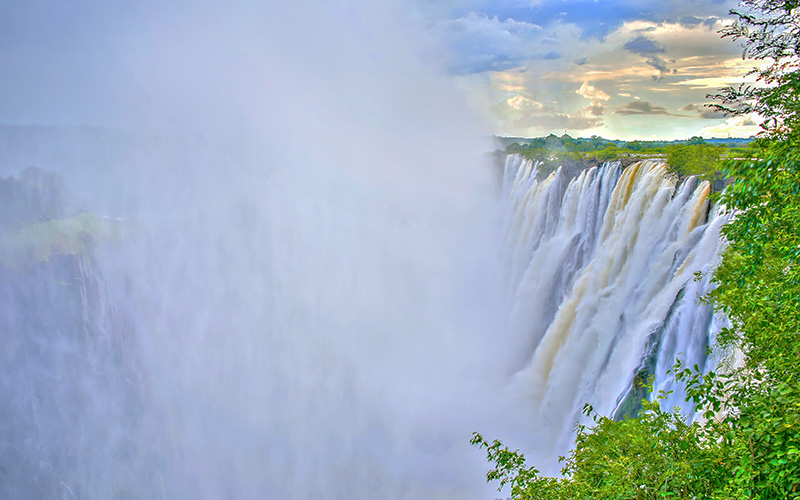
Victoria Falls: Zimbabwe or Zambia?
Victoria Falls can be seen from both Zimbabwe and Zambia. The Zambezi River is the national border between the countries and the jaw-dropping Victoria Falls Bridge – built in 1905 as part of Cecil Rhodes’ vision for a continuous railway line throughout Africa – spans the gorge to link the two.
Roughly three quarters of the falls lie in Zimbabwe. Here, well-paved nature trails wind in and out of Victoria Falls National Park – where the spray creates a rainforest ecosystem, and warthogs and monkeys freely roam – to reveal 16 incredible viewpoints. On the Zimbabwean side you’ll be able to capture full-length shots of the falls, as well as the iconic rainbow arch at Rainbow Falls. Victoria Falls National Park is also one of the few places on Earth where it’s possible to see a lunar rainbow – when there’s a full moon, the park stays open late so that visitors can gaze upon the ‘moon-bow’ in the evening light.
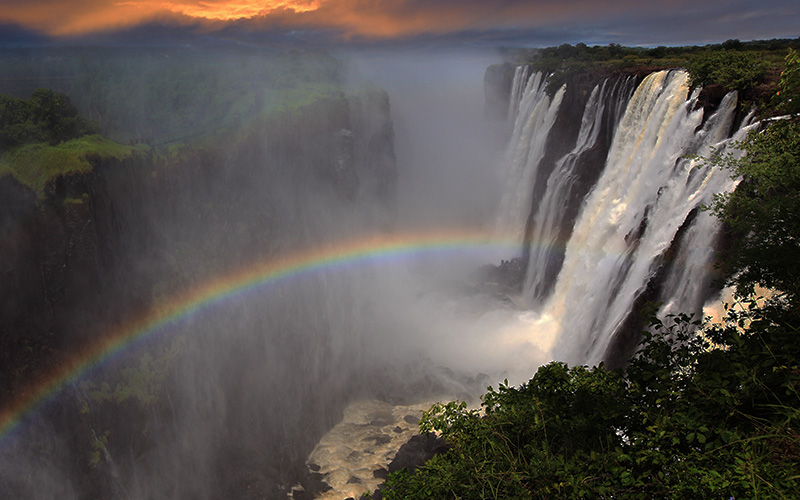
The National Park is surprisingly unassuming and untouched by commercialisation – there are no persistent hawkers or exits through huge gift shops here. While Zimbabwe has had a rough time for over a decade, the opening of the new Victoria Falls International Airport – offering more flights, as well as bringing more investment to the whole region – and the change in currency to the US Dollar, means that now is an excellent time to visit.
Zambia has a much smaller section of the falls, but it makes the most of it. Footpaths here reach right to the edge, with the aptly-named Knife Edge Bridge taking you over the gorge and incredibly close to the cascading waters. The Zambian side is also where you’ll find one of the falls’ most famous attractions: Devil’s Pool. This is the ultimate infinity pool, right at the edge of the cliffs above the Zambezi. During the dry season, travellers can take an exhilarating dip in the pool when lower water levels reveal rock walls that form a barrier from the plunging 100-metre drop. The most dramatic sunset shots can also be captured from the Zambian side; the perfect spot to look down the falls with the sun setting behind is close to the exit gate.
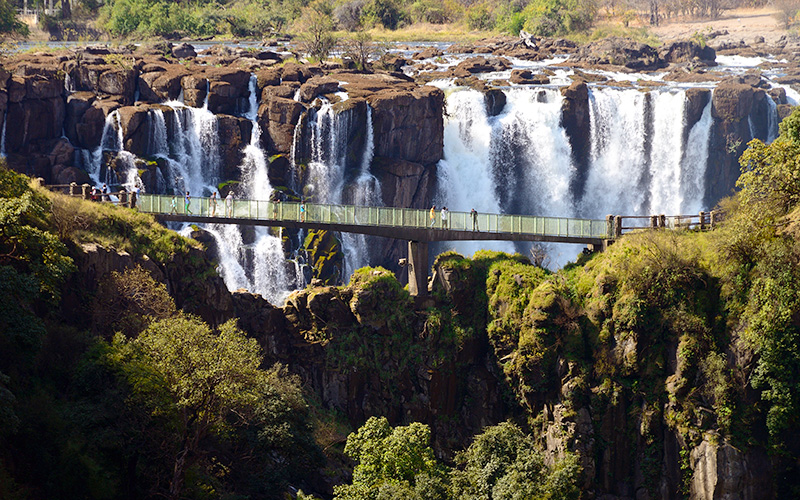
There are some excellent safari lodges and colonial hotels on both sides of the falls, centred around Victoria Falls town in Zimbabwe and in Zambia along the river, about 20 minutes’ drive from Livingstone town and airport. Many lie within walking distance of the falls and some are even close enough to see the rising spray.
When to visit Victoria Falls
The falls are an impressive sight year-round, although there are distinct wet and dry seasons. Which season is best depends on what you’re hoping to see. The dry season runs between May and November and offers a clear view of all sections of the falls. In May, the falls are in full flow and you’ll be able to hear the roar long before you see any water. June to September is the most popular time to visit, when water levels have started to drop and reduced spray ensures better visibility, making for excellent photo opportunities. By October, it’s hot and humid and the waters can be reduced to a trickle, exposing the magnificent gorge. At this time of year, it’s worth opting for Zimbabwe as the falls on the Zambian side are almost dry; however Zambia’s redeeming feature is that this is the best time to take high tea on Livingstone Island at the edge of the falls and swim in Devil’s Pool, open from September to December dependent on water levels.
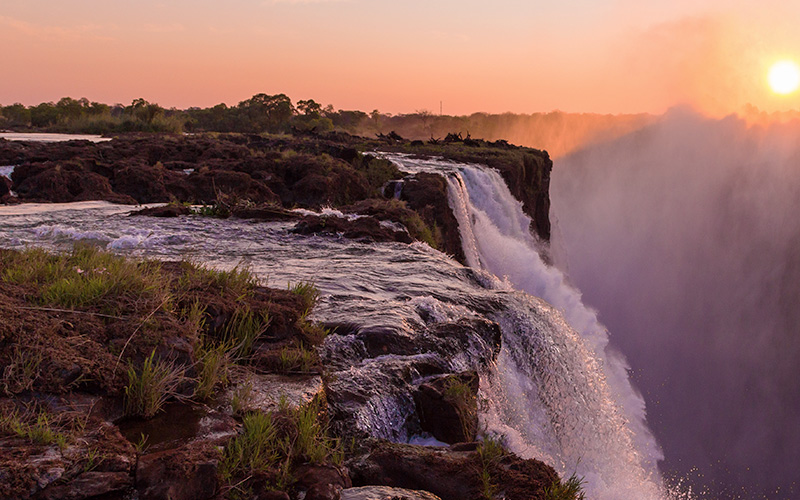
December to April is the wet season, when a wall of water thunders down the cliffside. Visit at this time of year and you’re guaranteed to get drenched – you’ll need a poncho and a waterproof camera bag. By March, the falls are bursting and the sheer volume of spray can obscure the view… but the rainbows created by the dense mist are breathtaking.
Where to stay at Victoria Falls
The 5* Anantara Royal Livingstone in Zambia is one of our favourites, as it’s right on the river’s edge with the most spectacular sunset deck a stone’s throw from the spray of Victoria Falls. It’s definitely the most sophisticated and stylish hotel in the area. If you stay for a minimum of three nights in 2018, you can enjoy a fine dining experience on the Royal Livingstone Express included in your stay. This classic steam train travels through breathtaking scenery and onto the bridge almost parallel to Victoria Falls, just as the sun is setting. The elegant surroundings and billowing steam will transport you back to a bygone era.
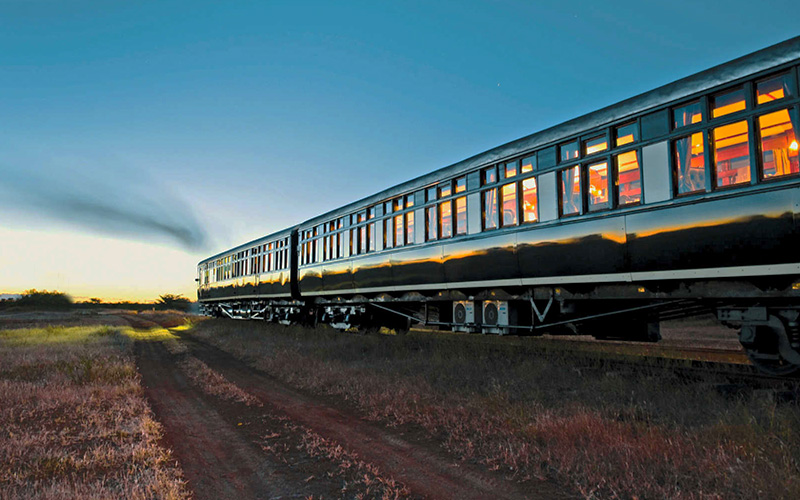
The lunar rainbows can be viewed from the Zambian side of Victoria Falls, too. Stay at Anantara Royal Livingstone and you can book a guided walk to the falls on a night when there is a full moon. Both of these experiences will create an evening you’ll always remember.
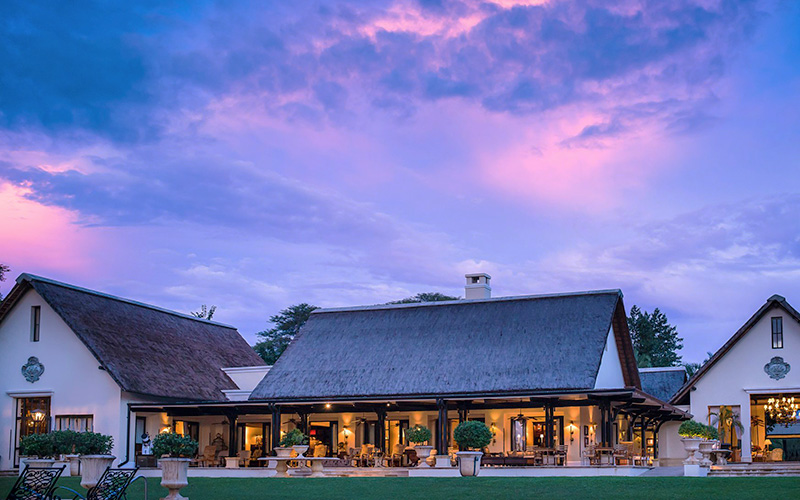
Inspired?
If you’re inspired by Victoria Falls, browse our Africa brochure or chat to one of our experts who can share their experiences and recommendations.
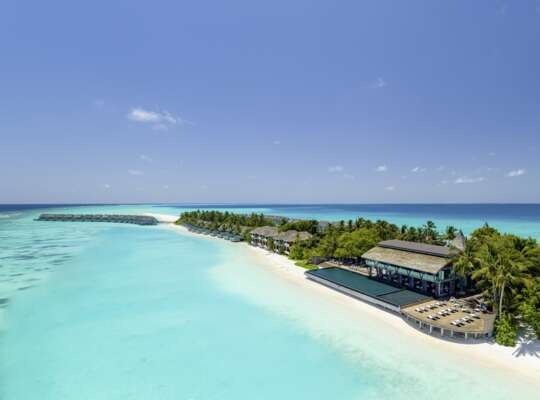
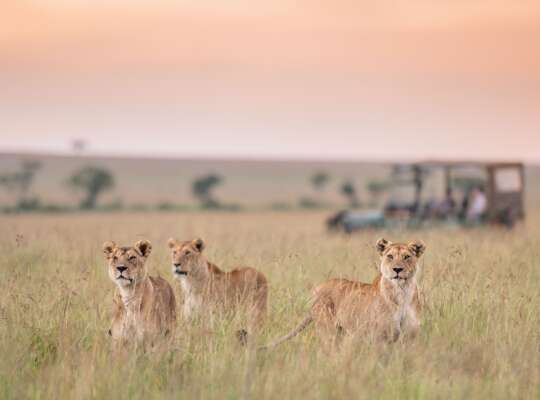
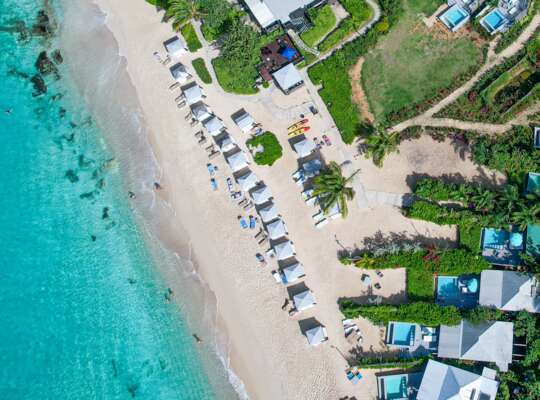

_w=24_h=25.webp?v=a392d311dd743e3625a1f57ba6fc3b967468f36c)
_w=24_h=25.webp?v=a392d311dd743e3625a1f57ba6fc3b967468f36c)
_w=24_h=25.webp?v=a392d311dd743e3625a1f57ba6fc3b967468f36c)